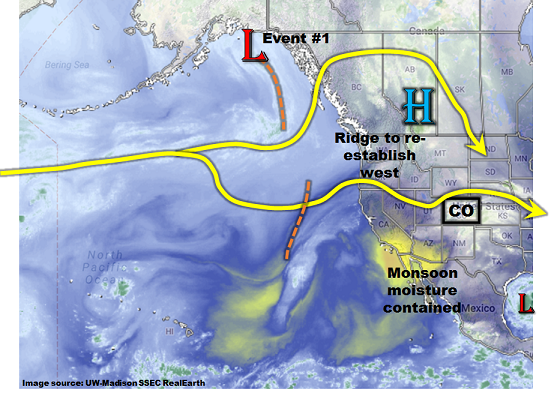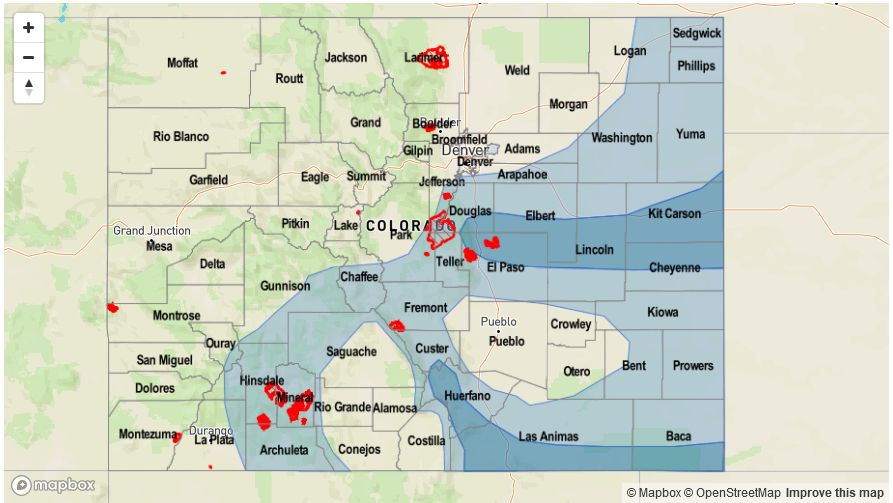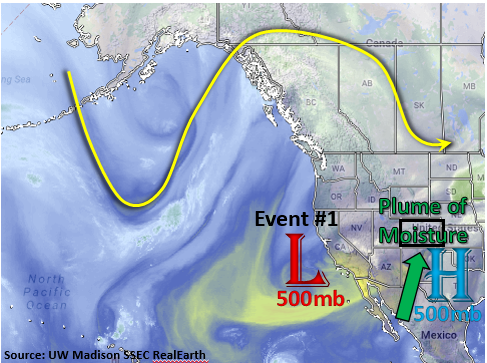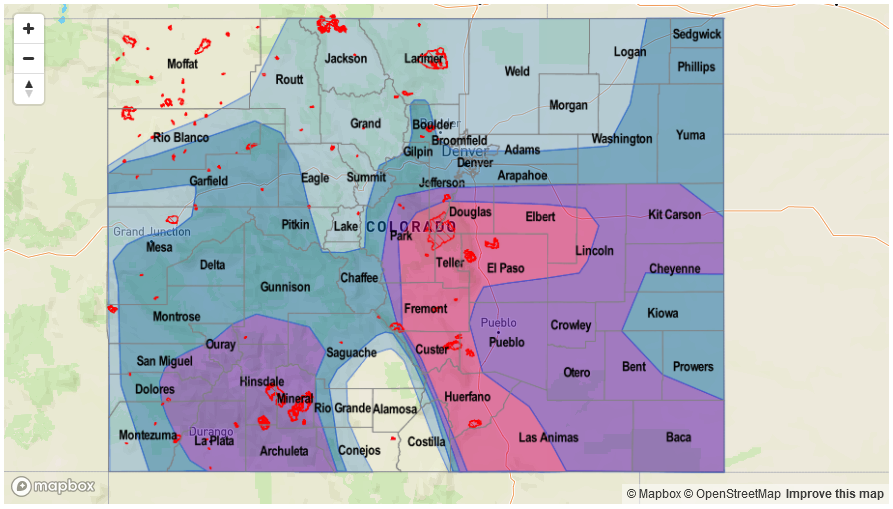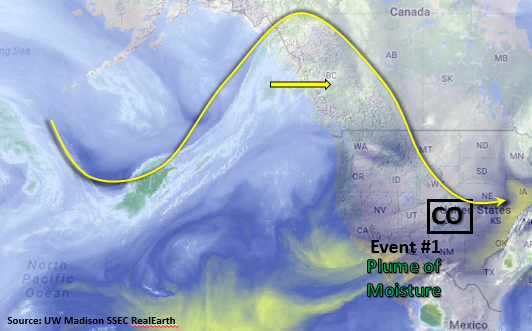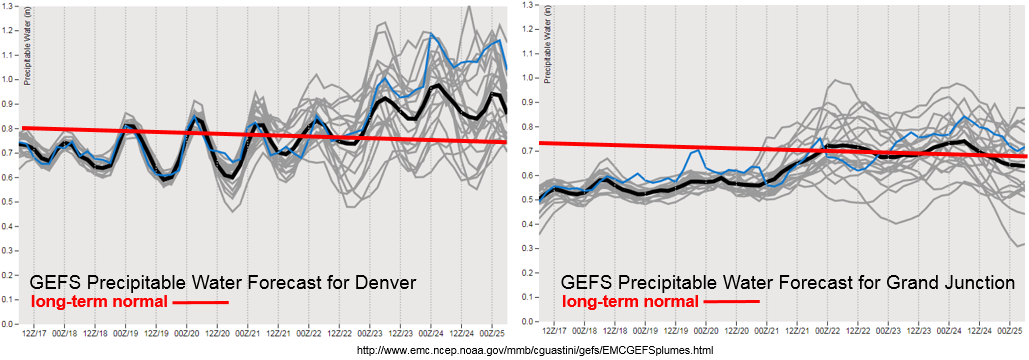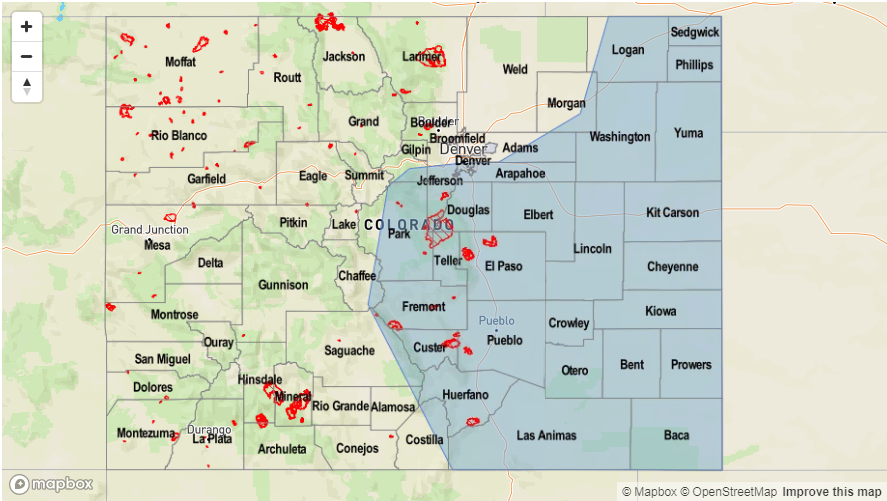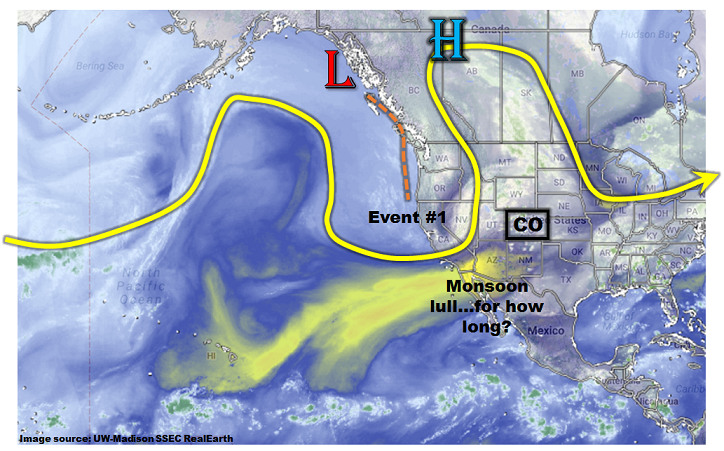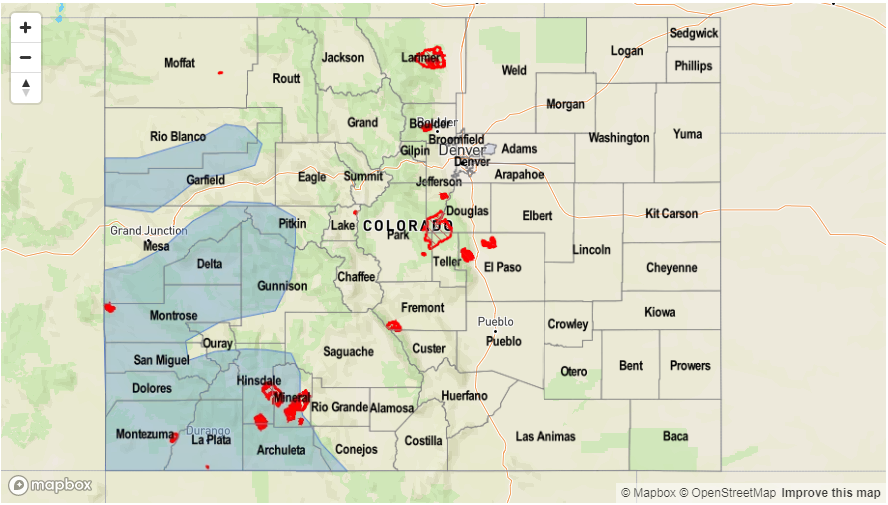Issue Date: Thursday, August 24, 2017
Issue Time: 2PM MDT
Valid Dates: 8/25-9/8
This afternoon’s water vapor imagery, below, shows a rather busy atmospheric pattern over the eastern North Pacific Ocean and western North American continent. A weak upper-level ridge was positioned over Alberta with an undercutting jet stream to the south. Within this jet, several weak disturbances were noted, causing large-scale upward motion. As we move into the next 72-96 hours, these features will trek across Colorado, providing enhanced periods of generally light to moderate rainfall. The exception will be on Sunday, as a surface high pressure system is expected to drop south out of Canada, helping drive a cool front southward across eastern Colorado. A brief period of heavier rainfall will be possible, warranting an Elevated flood threat on Sunday afternoon and evening.
After Event #1, drier conditions are expected statewide as an upper-level ridge rebuilds to the northwest of Colorado. With a maintenance of average to above average Precipitation Water (PW; see GFS ensemble plume forecasts below), isolated showers and weak thunderstorms will be possible during the afternoons but the coverage and intensity appear to be too marginal to designate this as an individual precipitation “Event”. However, by Saturday, 9/2, guidance is in reasonable agreement that a strong surface high pressure will move southward into the Great Plains out of Canada. This late in the season, it is uncertain whether there will be enough low-level moisture available for heavy rainfall, with even more uncertainty due to the presence of Hurricane Harvey in the Gulf of Mexico. However, we have labeled this as Event #2 due to an expected increase in precipitation coverage.
As shown in the forecasted PW plumes, above, most of the precipitation “action” during the Outlook is expected to stay east of the Continental Divide as monsoon moisture should remain bottled up in Arizona and New Mexico.
Below we describe each of the two identified precipitation events in more detail.
Event #1: Friday (8/25) through Monday (8/28)
Low-end Elevated flood threat on Sunday in between a period of light/moderate rainfall
Several upper-level disturbances are expected to trek eastward across Colorado through next Monday. Most of these will be strictly upper-level driven, and with only marginal boundary layer moisture/convergence are not expected to produce heavy rainfall. Instead, light to moderate rainfall up to 0.75 inches will be possible during Friday and Saturday afternoons east of the Continental Divide. On Sunday, a frontal passage is expected across eastern Colorado. With PW expected to be at or above 1 inch across eastern Colorado, localized heavy rainfall rates up to 1.5 inches per hour will be possible. An accompanying isolated flash flood and small stream flood risk will be present with the strongest thunderstorms. However, riverine flooding is not expected. Marginally severe thunderstorms (main impact: large hail) will be possible especially eastward towards the KS border.
By Monday, drier air will overtake most of the state though showers and weak thunderstorms will be possible over southeast Colorado.
Event #2: Sunday (9/2) through Monday (9/4)
No Apparent Flood Threat as front passage likely, but moisture availability uncertain
Guidance is in good agreement that a relatively strong surface high pressure will move southward out of Canada, driving a cool front passage across eastern Colorado. A period of enhanced rainfall coverage is expected starting Saturday, 9/2. At this time, rainfall rates are not expected to exceed 0.5 inches per day, thus no precipitation map is provided. Depending on what transpires in the Gulf of Mexico with Hurricane Harvey, it is possible that more moisture will be available to draw into Colorado, which in turn could elevate the flood threat. Check back to Monday’s Outlook for more information.

